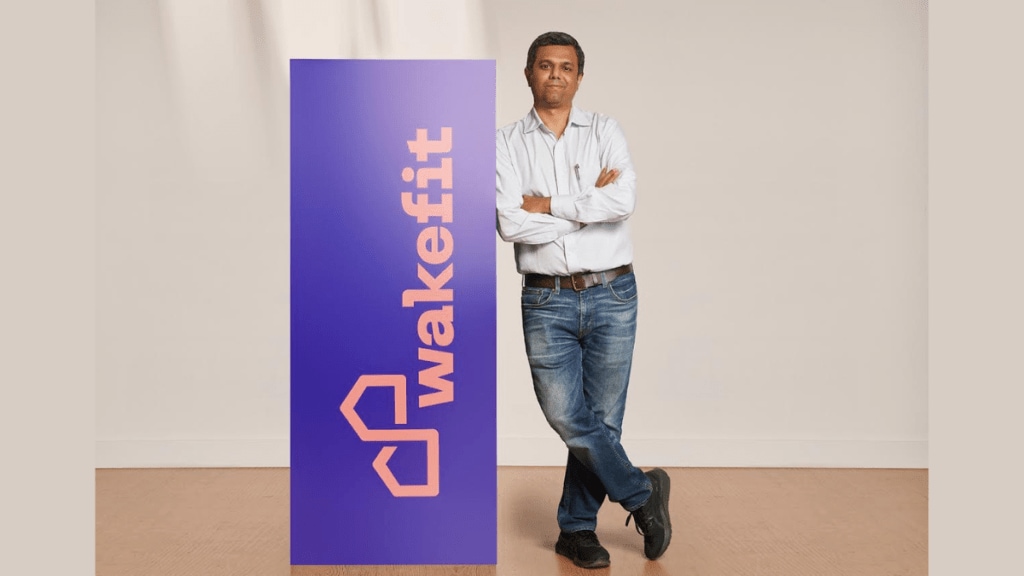Launched nearly eight years ago as a D2C mattress brand, Wakefit has now widened its range of offerings to include home décor and furniture. Chaitanya Ramalingegowda, the company’s co-founder and director, recounts the brand’s offline journey to Christina Moniz and talks about its strategy to compete with large, legacy brands in the home business. Edited excerpts:
Yours is a high investment category. What does it take for a newbie to succeed?
Unlike many companies, we don’t start by earmarking a certain amount for marketing or advertising. We use a zero-based budget for marketing and instead look at how we can do what is necessary to build the business. On an average, our annual advertising and marketing spends are in the late single digits. In fact, because we don’t earmark budgets, our marketing strategy is rather liberating with no major constraints in terms of expense. We don’t dismiss a campaign idea or piece of content if it is too expensive. Every year, our advertising channels depend on what our objectives are. We typically have spent a lot more on digital and social media in the past because our offline footprint was smaller and a large part of our revenue came from online sales. In the next fiscal, we will take a more omnichannel marketing approach since that is how the business is currently growing. We also named Ayushmann Khurrana as our brand ambassador last year, which has worked out well for the brand. Like Wakefit, he too has constantly reinvented himself over the course of his impressive career.
How do you plan to take on intense competition?
We are a company with a bit of a split personality. Some of our competition operates largely in the furniture space, some focus on mattresses while others focus on bed linen, décor and accessories. Our brand has offerings across all these categories. Our objective is not to compete with the others in the category because that will not serve us well. We have a different approach that is focussed on improving our net promoter score, increasing the lifetime value of the customers and furnishing more of their homes. The DNA of our company is different because we also have our own factories, warehouses, carpenters, and delivery and installation mechanisms.
What we have managed to do over our eight years of existence is build consumer trust by ensuring high-quality products and good warranty, and also through offerings like 100-night trials for our mattresses. Even for our range of furniture, we offer complete product replacement in case of defects or issues during the warranty period.
Over the past few years, Wakefit forayed into new home furnishing segments. How has this category expansion helped the brand grow?
We entered new categories like furniture around three years ago, because we had established ourselves in the mattress space and had earned the trust of our customers. The home furnishings market is still fairly shallow, and we realised that if we are able to service a larger share of the customer’s wallet, we will be able to grow better as a company. Very few companies are able to remain within one category and hit annual revenues of `3,000-4,000 crore and upwards. Companies need to expand either in category or geography to grow. Our entry into the home furnishings and furniture space has paid off well. In FY23, we grew around 30% over FY22 with revenues of `825 crore and are aiming to cross the `1,000-crore mark by the end of this fiscal. We grew during the festive season by 35% compared to last year’s festive season. We’re hoping to see good growth in this quarter too.
You forayed into offline retail in 2022. How is the brand performing in the physical retail space?
Yes, we are now an omnichannel brand, although we are still fairly nascent in terms of offline presence. It has been just around 19 months since we started our offline journey. We now have close to 50 stores across 19 cities. Sales at our retail stores are becoming a significant revenue contributor, and sales from our own channels (online and offline) contribute to nearly two-thirds of our revenue. We will continue to add stores at a steady cadence. Our endeavour is to grow and expand our presence in existing cities first before entering newer cities. We will steadily work our way up to 70 stores by the end of this fiscal year. We are present not only in tier-I and metro markets but also cities like Lucknow, Ahmedabad and Mysore.
Would you say that the bulk of your sales comes from top metros and tier-I markets?
When we were an online-only brand, the share of revenue from top cities was equal to that of other markets. We have made serious efforts to ensure that we are not dependent only on one set of consumers or on specific markets for growth. Now that we are an omnichannel brand, 60% of our sales comes from the top eight cities such as Mumbai, Delhi NCR, Hyderabad, Kolkata and Bengaluru. The number is slightly skewed towards the top cities because many of our stores are in these cities.

